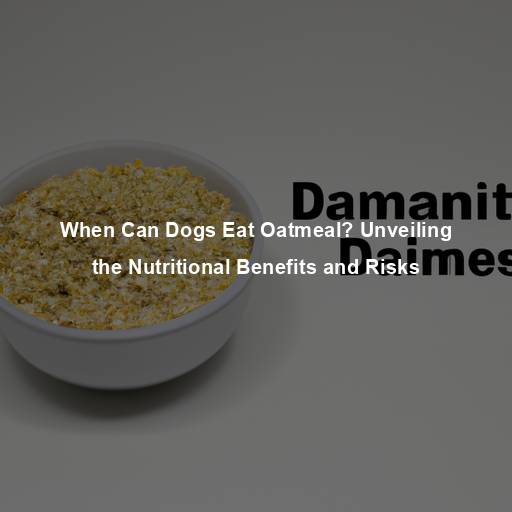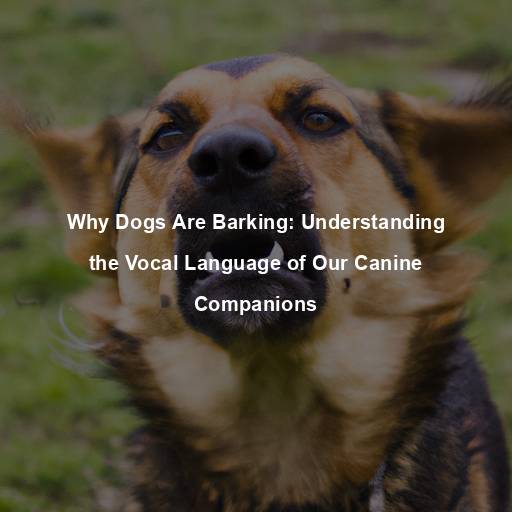Do Dogs Pant When in Pain?
Last Updated on October 22, 2023 by Evan
Contents [hide]
- 1 Understanding the Complexities of Canine Communication
- 2 Enhancing the Quality of Life for Dogs
- 3 Deepening the Human-Canine Connection
- 4 FAQs – Do Dogs Pant When in Pain
- 4.1 Can panting be a sign that my dog is in pain?
- 4.2 What are some other signs of pain that I should look out for in my dog?
- 4.3 Are there specific medical conditions that can cause panting in dogs when they are in pain?
- 4.4 How can I differentiate between panting due to pain and panting due to normal physiological reasons?
- 4.5 Should I be concerned if my dog is panting due to pain?
Understanding the Complexities of Canine Communication
Dogs have an incredible ability to communicate with us, whether it’s through their wagging tails, expressive eyes, or playful barks. But what about panting? As pet owners, it’s essential to decipher the various messages our furry friends convey. One common question that often arises is whether dogs pant when in pain.
Decoding the Purpose of Panting
Understanding the perplexing relationship between panting and pain in dogs requires unraveling the intricate mysteries of canine physiology. Panting, a seemingly innocuous behavior, serves as a multi-faceted mechanism for our beloved four-legged companions. Delving into the depths of this enigma, let us explore some of the myriad reasons behind the act of panting in our canine friends.
-
Thermoregulation: Dogs don’t have sweat glands like humans, making panting their primary method of cooling down. By rapidly exhaling warm air and taking in cooler air, they regulate their body temperature.
-
Stress and Anxiety: Panting can also be a sign of stress or anxiety in dogs. When faced with a distressing situation, such as a thunderstorm or a visit to the veterinarian, panting helps them cope with their emotional state.
-
Exertion and Exercise: Dogs often pant after physical activity or exercise. Panting allows them to catch their breath and restore oxygen levels in their bodies.
Now that we have established the primary reasons behind panting let’s explore whether it is indicative of pain in dogs.
The Link Between Panting and Pain
Pain is a complex and subjective experience, not only for humans but also for our canine companions. While dogs may not be able to verbally express their pain, they exhibit various behavioral and physiological changes. Panting can be one of these signs, but it’s crucial to interpret it in the context of the overall situation and your dog’s normal behavior patterns. Here are a few factors to consider:
- Observing Other Symptoms: Panting alone is not enough to determine if your dog is in pain. Look for other signs such as whining, limping, decreased appetite, restlessness, or changes in posture. These indicators, when combined with panting, may suggest pain or discomfort.
It’s essential to be in tune with your furry friend’s regular routines and behaviors as a responsible pet owner. By observing their normal behavior closely, you’ll be able to easily recognize any unusual patterns that might suggest discomfort or pain. For instance, if your dog starts displaying unexpected and excessive panting, it’s crucial to pay attention and investigate further, as this could be a red flag for potential issues requiring attention.
Delving deep into the intricacies of the situation at hand, let’s unravel the enigmatic art of contextual analysis. Consider this scenario: picture your furry companion returning home after an invigorating romp or a leisurely stroll under the scorching sun. In such circumstances, the act of panting would naturally unfold. Yet, if your loyal companion persists in panting beyond reason, it could very well be a cryptic message that pain and distress have taken residence within their delicate frame.
Listen up pet parents! Panting in your beloved fur babies can sometimes indicate pain, but hold your horses! Don’t jump to conclusions just yet. Remember, panting alone is not a crystal-clear diagnosis.
Common Misconceptions and Clarifications
After diving into the intricate connection between dogs’ panting and pain, it’s high time we unravel the enigmatic web of misconceptions surrounding this captivating subject. Delving into the depths of canine physiology and behavior, we can decipher the perplexing truths that lie beneath the surface. So, buckle up as we embark on a journey to demystify the perplexities that shroud the interplay of panting and pain in our beloved four-legged companions.
Is Panting Really Always a Sign of Pain? Let’s Reconsider: We’ve touched upon the topic of panting before, noting that it can stem from a range of reasons such as adjusting body temperature, experiencing stress, or even being physically exerted. It’s crucial, however, to take into account other accompanying symptoms and behaviors to accurately interpret panting as an exclusive marker of pain.
- All dogs pant the same way: Each dog is unique, and their communication styles may differ. Some dogs naturally pant more than others, and factors such as breed, age, and health condition can influence their panting patterns. Therefore, it’s crucial to understand your dog’s individual characteristics and what is normal for them.
When it comes to panting, it’s natural to feel a sense of unease. But before you jump to conclusions, it’s important to know that not all panting is cause for alarm. While it can sometimes be a sign of a serious issue, it’s also possible that your furry friend is simply hot or excited. Trust your instincts, but don’t hesitate to reach out to a professional if you notice anything out of the ordinary.
When to Seek Veterinary Assistance
As responsible pet owners, it is our duty to ensure the well-being and happiness of our furry companions. While panting alone may not always indicate pain, there are instances where seeking veterinary assistance is necessary. Here are some situations when it’s crucial to consult a professional:
When our furry companions start exhibiting unexpected shifts in their behavior, it can leave us feeling puzzled and worried. If you notice that your canine companion’s panting is accompanied by peculiar actions such as increased aggression, unusual sluggishness, or a sudden disinterest in food, it becomes crucial to reach out to a trusted veterinarian for guidance without delay. Trusting professional advice can help unravel the enigma behind these perplexing changes in your beloved pet.
- Persistent or Excessive Panting: If your dog continues to pant excessively even in cool environments or without any apparent triggers, it may be an indication of an underlying health issue that requires attention.
Is your furry friend huffing and puffing post-surgery or traumatic event? Don’t fret, it could just be a cry for help! Excessive panting in these situations might indicate pain or discomfort. To put your pet’s well-being first, it’s vital to seek guidance from a trusted veterinarian who can provide tailored pain management options.
As devoted caretakers of our furry companions, it is our sacred responsibility to champion their welfare at all times. With an unwavering commitment to their happiness and health, we must remain ever watchful and ready to seek the guidance of experts whenever the need arises. By doing so, we can rest assured that our beloved canines receive the optimal care they so rightly deserve.
Behavioral Changes
Dogs are masters at masking pain, as it is an instinctual survival mechanism. However, there are subtle behavioral changes that may indicate they are experiencing discomfort. These changes can include:
-
Increased aggression or irritability: If your dog suddenly becomes more aggressive or irritable, it may be a sign that they are in pain. They may snap or growl when touched or approached.
-
Withdrawal or hiding: Dogs in pain may seek solitude or hide in an attempt to cope with their discomfort. If your usually sociable dog becomes withdrawn or avoids interaction, it may be an indication of pain.
When a furry companion starts experiencing altered sleep patterns, it can be quite a puzzle to comprehend. The enigma lies in how pain can play a mischievous role, disturbing their otherwise peaceful slumber. Whether they succumb to prolonged periods of drowsiness or struggle to find tranquility, delving deeper into these perplexing changes becomes a paramount mission for any discerning pet parent.
When our furry companions experience discomfort, their appetite often becomes a victim of the circumstances. They may exhibit a lack of interest in their usual culinary delights, leaving us perplexed and concerned. If your beloved pooch starts showing an unexpected disinterest in mealtime or experiences a noticeable decline in their appetite, it could be an indication that they are grappling with some hidden pain.
Physical Signs
In addition to behavioral changes, physical signs can also provide valuable insights into your dog’s pain levels. While these signs may vary depending on the underlying cause of pain, some common physical indicators include:
- Limping or favoring a specific limb: If your dog is experiencing pain in a particular leg or joint, they may limp or avoid putting weight on that limb.
It’s truly intriguing to observe how our furry friends communicate their discomfort through subtle changes in posture or movement. The enigmatic language of dogs becomes a captivating puzzle as they hunch their backs, gracefully navigate with a stiffness unprecedented, and battle with climbing stairs or gracefully leaping onto furniture. These puzzling signs serve as a gentle reminder of the intricate world that our canine companions reside in, allowing us a glimpse into their unspoken trials and tribulations.
- Excessive grooming or licking: Dogs may attempt to alleviate their pain by excessively grooming or licking the affected area. This behavior can lead to hair loss, redness, or even open sores.
When it comes to the health and well-being of our furry friends, it’s important to pay close attention to any changes in their behavior. One notable indicative signal that something might be amiss is dilated pupils. Should you happen to notice that your beloved canine’s pupils are consistently larger than usual, it could be a telltale sign that they are experiencing some form of underlying pain. So, make sure to keep a keen eye out for this perplexing phenomenon and ensure the best care for your four-legged companion.
When to Consult a Veterinarian
Taking care of your furry companion requires both astute observation and timely medical intervention. There are moments that demand the expertise of a veterinarian, and it is imperative to recognize these situations. Seeking professional care becomes crucial when your dog exhibits unusual behavior, experiences sudden health issues, or undergoes significant changes in their physical condition. Embracing the uncertainty of these circumstances and reaching out to a veterinary professional can ensure the well-being and longevity of your beloved pet.
When it comes to our furry companions, sometimes they can surprise us with sudden twists in their behavior. If you notice your dog behaving in a drastically different manner, like showing heightened aggression or unusual lethargy, it’s crucial to reach out to your trusted veterinarian without delay. They’ll have the expertise to help unravel this perplexing situation and provide the necessary assistance for your beloved pet.
Is your fur baby experiencing long-lasting or even getting worse pain-related symptoms? It could be an indication of an underlying medical issue that demands immediate attention. Don’t let perplexity cloud your judgment, seek professional help and ensure your beloved pet’s well-being.
When it comes to your furry friend’s well-being, trauma or injury should never be taken lightly. It’s imperative to seek professional evaluation from a veterinarian, even if the signs of pain don’t seem apparent at first. Remember, our loyal companions rely on us to make the best decisions for their health, especially in times of uncertainty.
Taking care of your furry friend after surgery is crucial, as you navigate the maze of post-operative pain management. Keep a vigilant eye on your dog’s pain levels and diligently adhere to your vet’s guidelines. Remember, proper post-operative care is the key to your dog’s speedy recovery and overall well-being.
Being a devoted pet owner means being an unwavering advocate for the health and happiness of our four-legged companions. It’s crucial to take an active role in safeguarding their well-being, which includes promptly seeking veterinary care whenever the need arises. By doing so, we can guarantee that our beloved furry friends are provided with the proper treatment they deserve, leading to a life devoid of needless discomfort and agony.
Enhancing the Quality of Life for Dogs
When it comes to our beloved furry friends, their well-being is always at the forefront of our minds. And one crucial aspect of their health that often goes unnoticed is the presence of pain. But fear not, for there are steps we can take to alleviate their discomfort and enhance their overall quality of life. In this article, we will explore practical measures that can help ease pain in dogs, ensuring they live their lives to the fullest and without needless suffering.
Regular Veterinary Check-ups
Regular veterinary check-ups are crucial for monitoring your dog’s health and detecting any potential pain or underlying medical conditions. These visits allow your veterinarian to perform a thorough examination, address any concerns, and recommend appropriate treatment or pain management strategies.
Maintaining a Healthy Lifestyle
A healthy lifestyle plays a vital role in preventing and managing pain in dogs. Here are some key factors to consider:
Ensuring your furry companion’s vitality calls for an essential element: a well-rounded regimen. Nourishing your dog with a carefully crafted menu, rich in nutrients, is key to promoting their overall health and happiness. Seek the guidance of your trusted veterinarian to tailor a diet that caters precisely to your four-legged friend’s unique nutritional requisites.
Keeping your furry friend fit and fab is no easy feat, but regular exercise is the key! It’s a marvelous way to keep those muscles flexing, those joints jazzed, and the weight in perfect harmony. Let’s not forget, though, each doggie is unique, so customizing those exercise routines to match their age, breed, and health conditions is the secret sauce for success. So go ahead, strut those paws and keep your canine companion bursting with vitality!
- Weight management: Maintaining a healthy weight is crucial for minimizing the strain on your dog’s joints and reducing the risk of developing conditions such as arthritis. Consult with your veterinarian to determine the appropriate weight and feeding regimen for your dog.
Pain Management Strategies
When pain is present, various pain management strategies can help improve your dog’s comfort and well-being. These may include:
When it comes to your beloved furry friend’s health, medications are often part of the equation. Your trusted veterinarian may recommend pain medications or anti-inflammatory drugs to help alleviate your dog’s discomfort. It’s of utmost importance to adhere to the prescribed dosage and to promptly reach out to your veterinarian should you have any questions or observe potential side effects. Keeping a close eye on your pup’s well-being is key – after all, their health and happiness are our top priorities.
- Physical therapy: Physical therapy can be highly beneficial in managing pain and promoting mobility in dogs. Techniques such as hydrotherapy, massage, and therapeutic exercises can help relieve discomfort and improve muscle strength.
Many pet owners these days are venturing into the realm of alternative therapies, opting for unconventional methods like acupuncture, chiropractic care, or herbal remedies to alleviate their furry friends’ pain. While these approaches hold a certain allure, it’s crucial to seek guidance from a well-trained practitioner who can guarantee the well-being and efficacy of such treatments.
Creating a Comfortable Environment
Creating a serene and secure space for your furry friend is of paramount importance when it comes to enhancing their overall welfare. Deliberate on the following factors that can significantly elevate their quality of life:
Nothing says “sweet dreams” like a plush and cozy bed for your furry friend. Investing in a soft, supportive bedding can work wonders in easing any tensions on their precious joints, ensuring a restful slumber for your beloved canine companion. Give them the gift of comfort and watch them drift off into dreamland with a smile on their face.
- Temperature control: Ensure that your dog’s living space is kept at a comfortable temperature, avoiding extreme heat or cold that may exacerbate their pain.
Ensuring the well-being of our furry companions is at the forefront of every pet owner’s mind, especially when it comes to managing their pain and stress levels. Dogs in pain tend to have heightened sensitivity to stress, exacerbating their overall well-being. Therefore, adopting measures to create a serene and stress-free environment becomes paramount. This can be achieved by reducing loud noises that may agitate them, establishing a consistent routine that provides them with a sense of predictability, and allowing them ample opportunities to rest and relax, providing them with the much-needed respite they deserve.
Emotional Support and Bonding
Building a strong emotional connection with our beloved canine companions is crucial for their overall happiness and wellness. Devoting quality time to engage in positive reinforcement training and indulging in mentally stimulating activities like interactive toys and puzzle games can work wonders in reducing their stress levels and nurturing their emotional well-being. Investing in the emotional support and bonding with our furry friends is a rewarding endeavor that can bring about immense joy and contentment for both them and us.
By incorporating these measures into your dog’s daily life, you can help alleviate pain, promote their overall comfort, and enhance their quality of life.
Deepening the Human-Canine Connection
Exploring the intricate realm of canine pain management not only cultivates a harmonious symphony between the physical and emotional facets of our furry friends’ lives but also amplifies the profound connection shared between humans and their loyal companions. By impeccably attuning ourselves to their individual needs, lavishing them with utmost care, and diligently seeking expert veterinary guidance when the occasion arises, we can effortlessly weave a tapestry of love, support, and pain-free existence for our canine counterparts. Let us wholeheartedly commemorate the remarkable synergy we share with our exceptional four-legged allies, treasuring each fleeting moment etched in our hearts.
FAQs – Do Dogs Pant When in Pain
Can panting be a sign that my dog is in pain?
It’s quite fascinating how our furry friends communicate with us, isn’t it? Panting, in particular, has long been a subject of curiosity among dog owners. The truth is, panting can sometimes be a subtle hint that your pup might be experiencing discomfort or pain. However, it’s a complex puzzle to unravel as panting can also serve other purposes, such as regulating body temperature or showcasing their vibrant emotions. So, when deciphering your dog’s panting patterns, remember to observe their overall behavior and look for other signs that may shed light on their well-being.
What are some other signs of pain that I should look out for in my dog?
In addition to panting, there are several other signs you can watch for to determine if your dog is in pain. These may include changes in behavior, such as increased restlessness or aggression, decreased appetite or water consumption, difficulty in movement or reluctance to engage in certain activities, excessive licking or grooming of a specific area, vocalizations like whimpering or yelping, and noticeable changes in their normal posture or gait. It is essential to consult with a veterinarian if you suspect your dog is in pain or experiencing any concerning symptoms.
Are there specific medical conditions that can cause panting in dogs when they are in pain?
It’s no secret that our furry friends communicate their distress in various ways. One peculiar but telling behavior is panting, which could potentially signal pain in dogs. A myriad of ailments, including arthritis, musculoskeletal injuries, urinary tract infections, bladder stones, or gastrointestinal disruptions, can lead to discomfort and trigger this panting response. It can, however, be quite perplexing to decipher the exact root cause of this distress, so seeking professional guidance from a veterinarian is always the best course of action for a precise diagnosis.
How can I differentiate between panting due to pain and panting due to normal physiological reasons?
Distinguishing between panting caused by pain and panting caused by regular physiological factors can pose a perplexing challenge. However, by taking notice of additional indicators and behaviors, the puzzle pieces can come together for a clearer understanding. If your canine companion is panting purely due to being too hot or from physical strain, their breathing should gradually return to normal as they cool off or rest. Conversely, if the panting persists, becomes excessive, is accompanied by distress signals, or if your dog displays other signs of pain, it is more likely linked to discomfort or pain. Remember, every pup has their own unique blend of quirks, so carefully observing their conduct and seeking guidance from a veterinarian for a thorough assessment is always a sage choice.
Should I be concerned if my dog is panting due to pain?
If your dog is exhibiting panting as a sign of pain, it is important to take their discomfort seriously and seek veterinary care. Pain can be an indication of an underlying medical condition or injury that requires proper diagnosis and treatment. It is always better to err on the side of caution and have a professional assess your dog’s condition. Your veterinarian will be able to provide the necessary guidance and recommend appropriate steps to alleviate or manage your dog’s pain.







